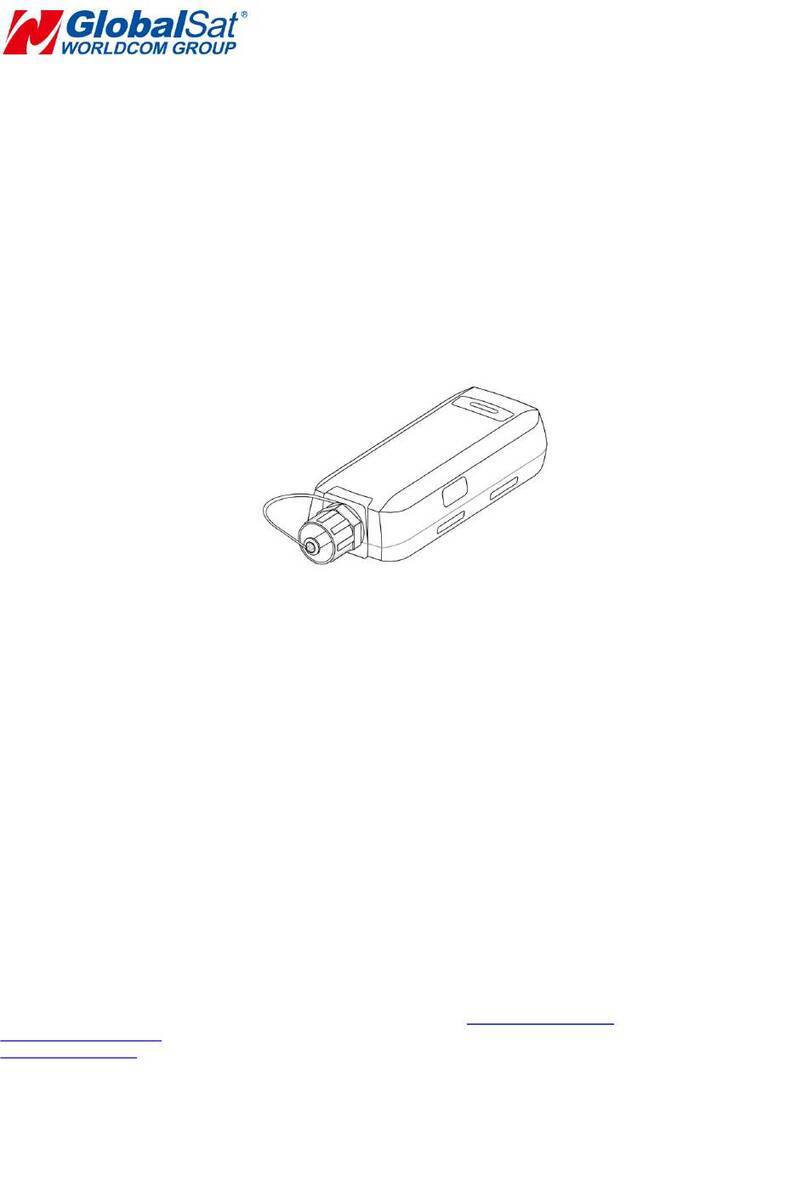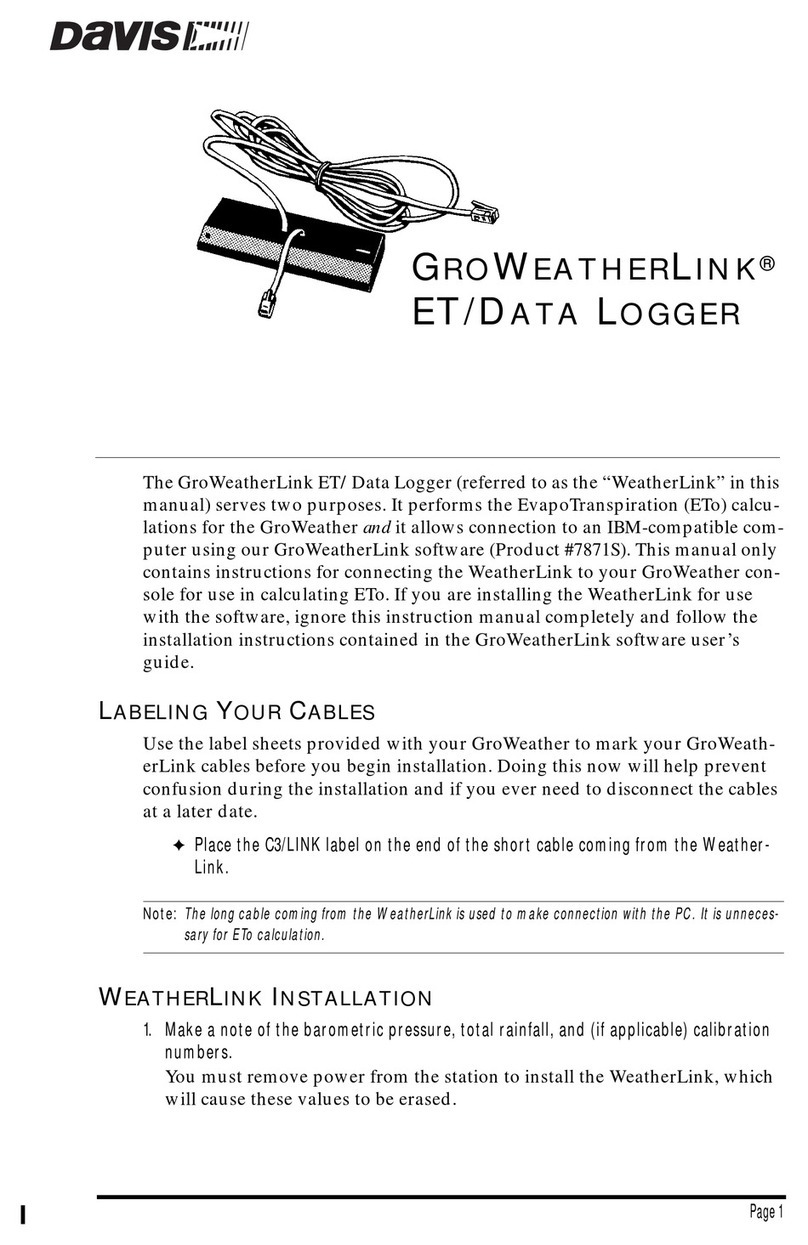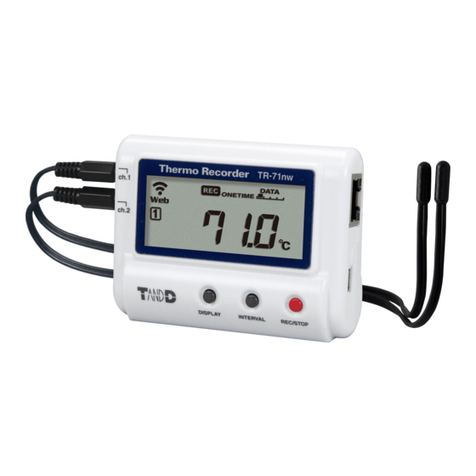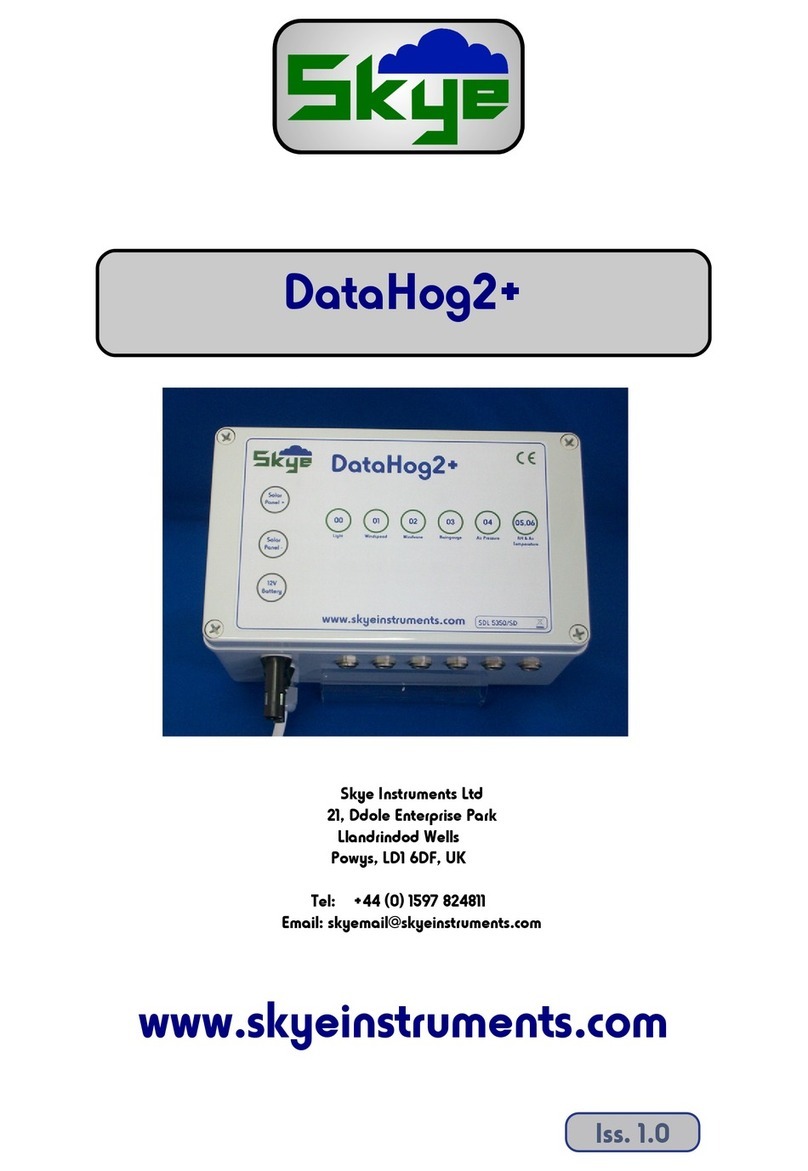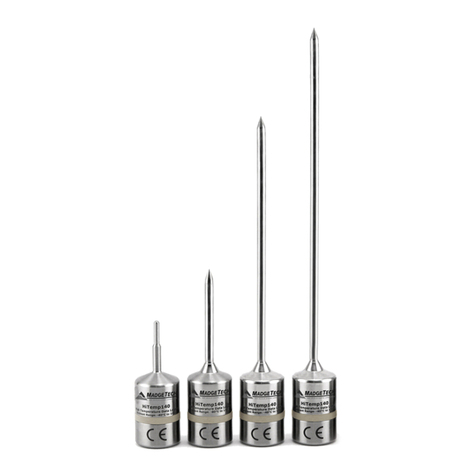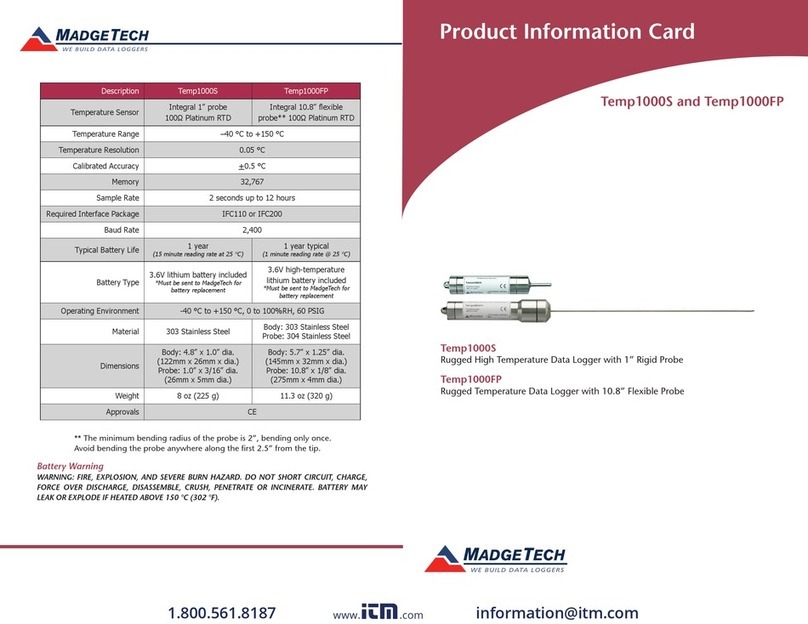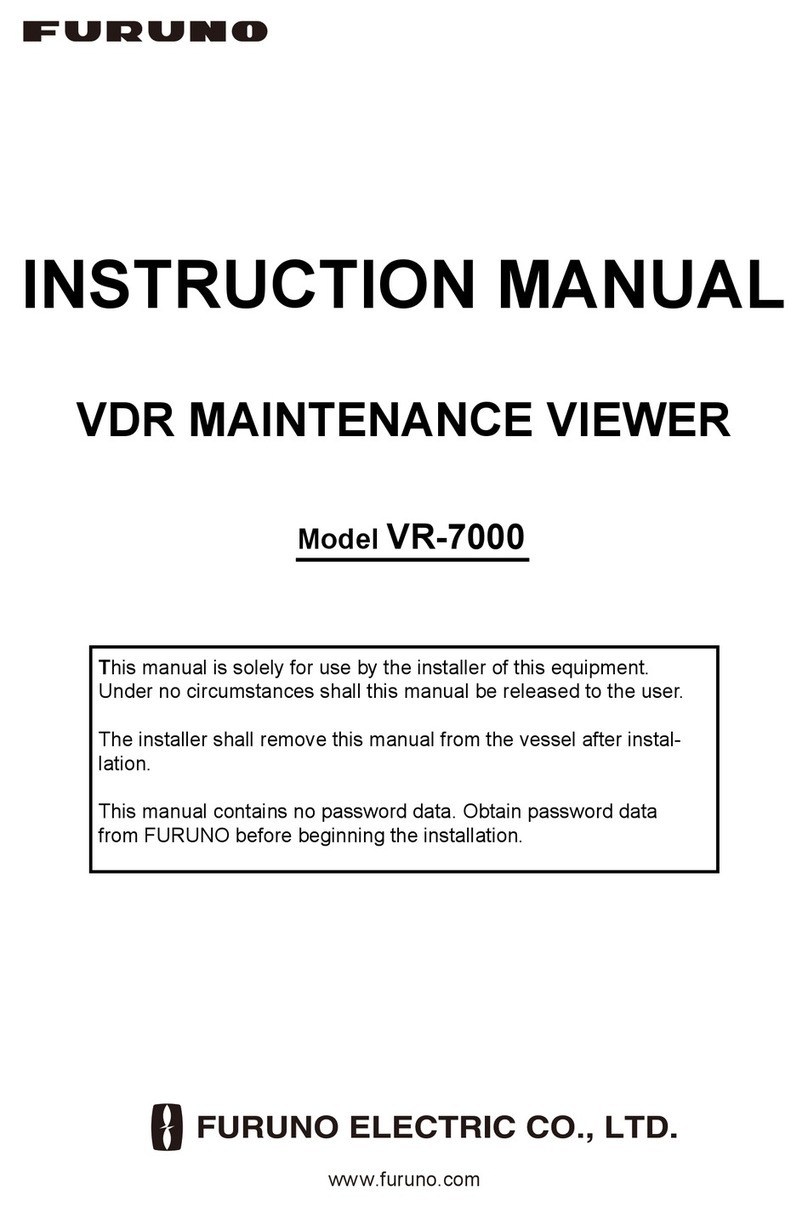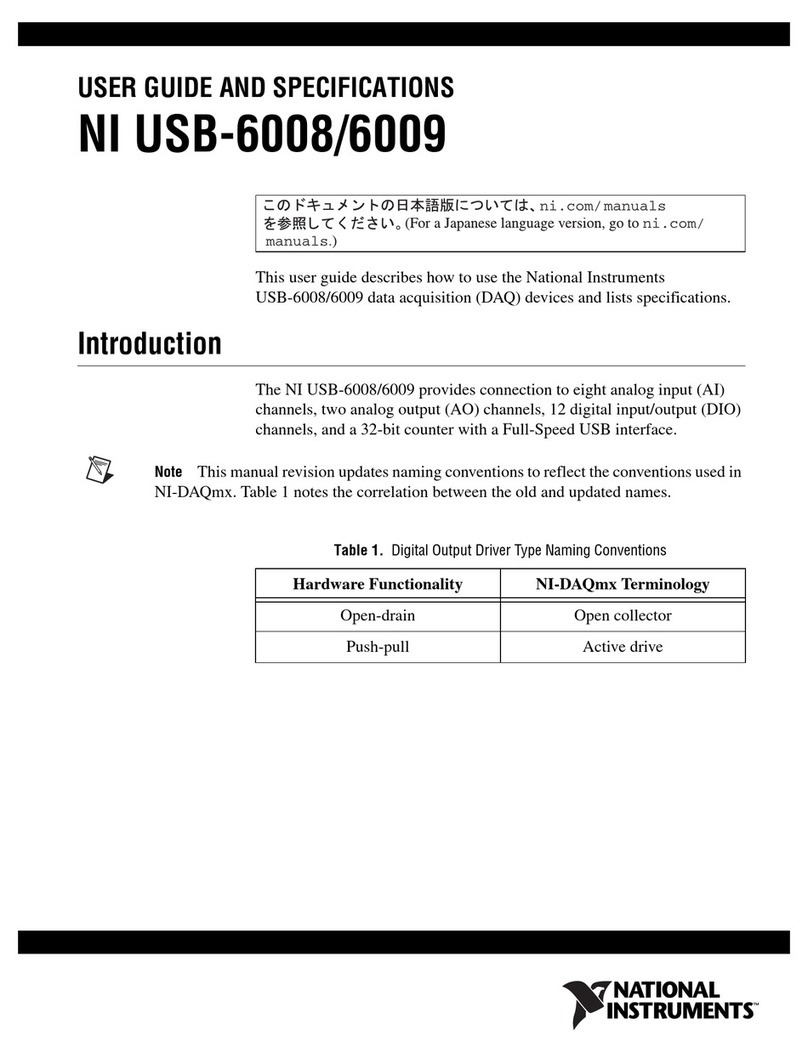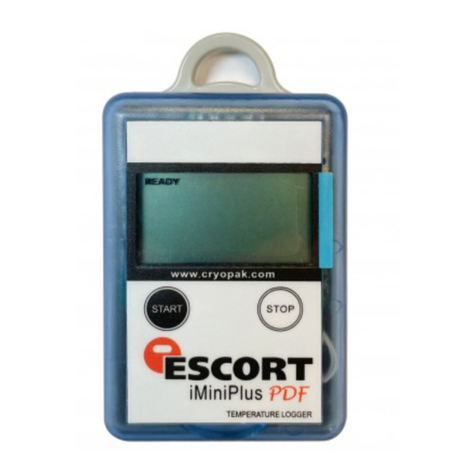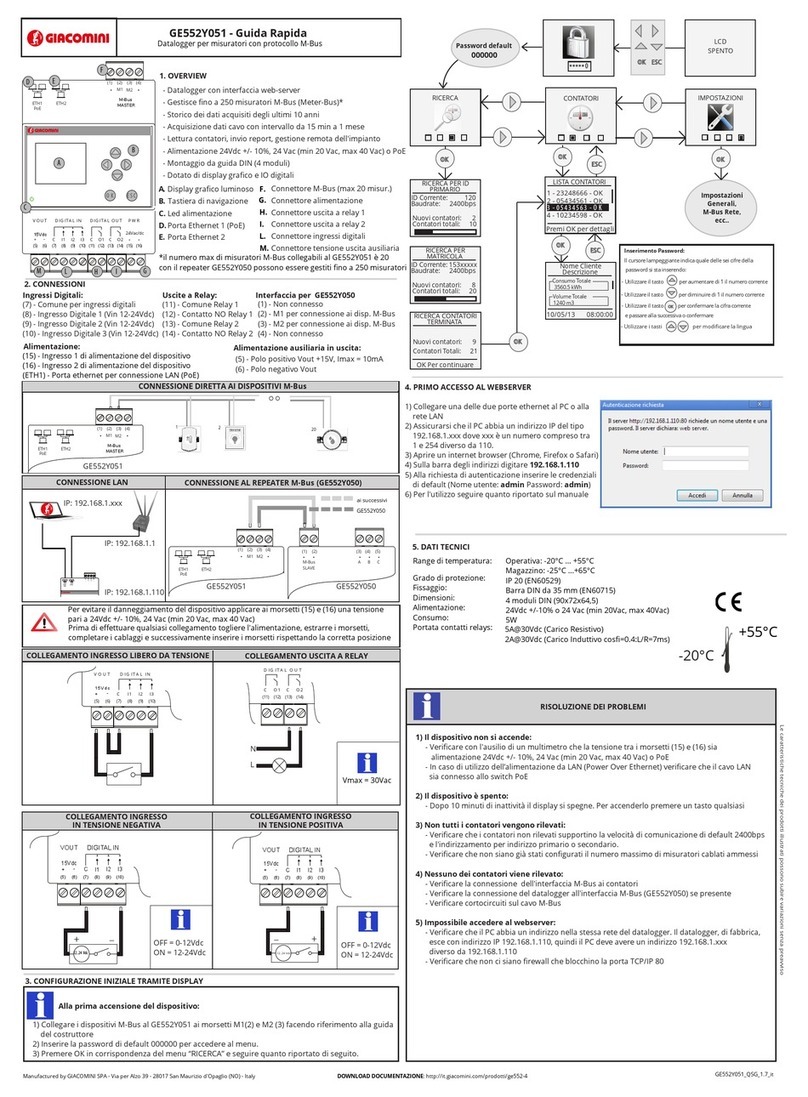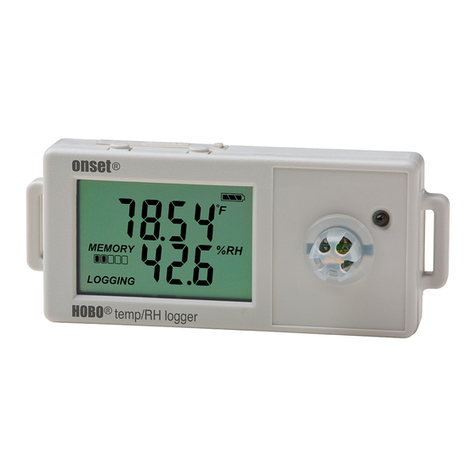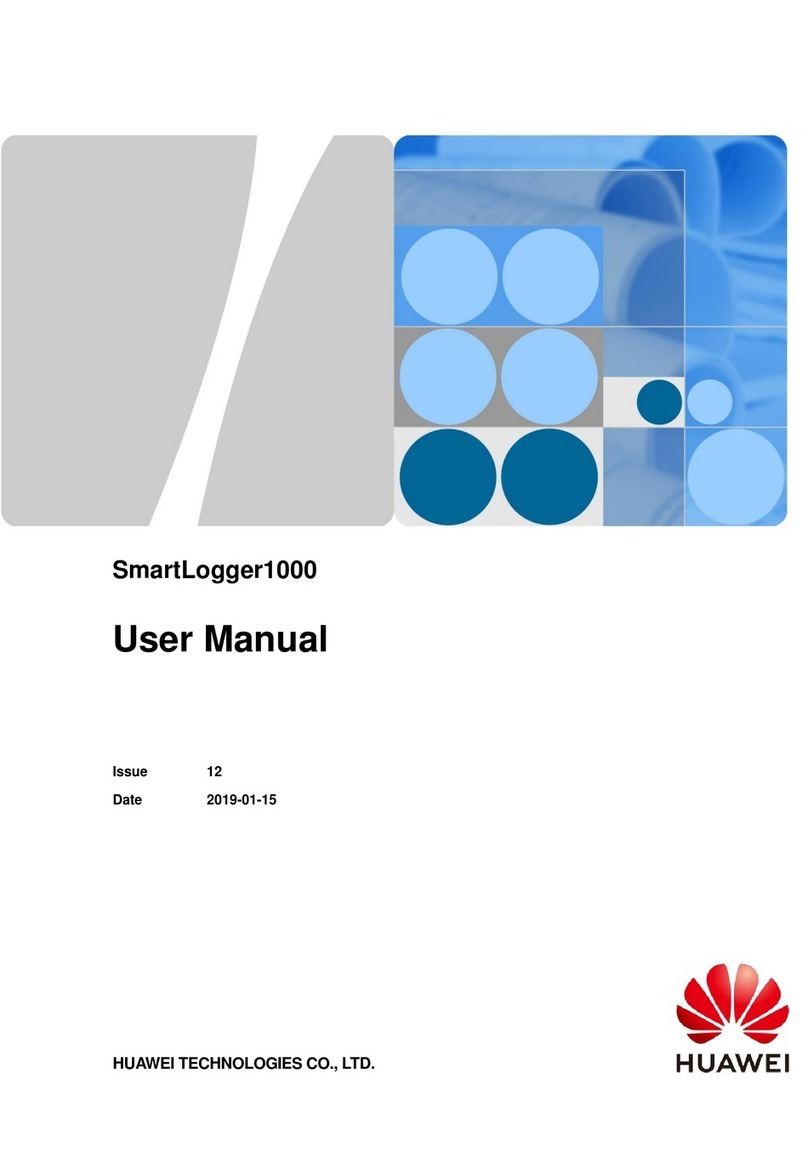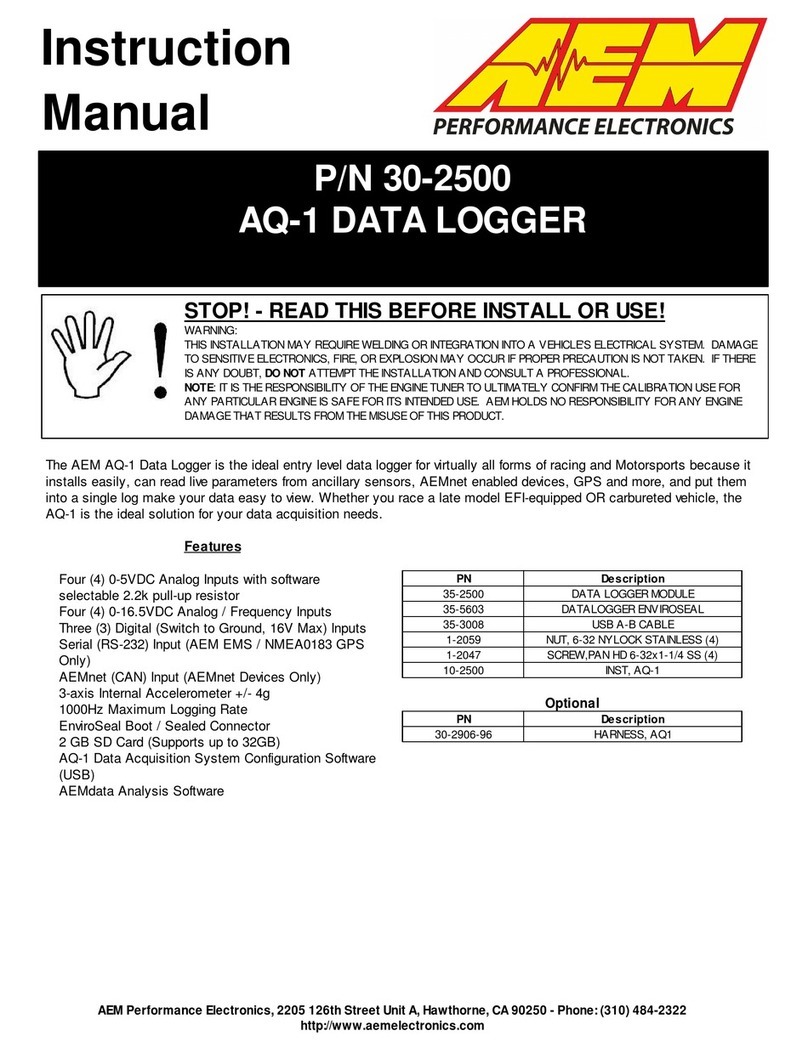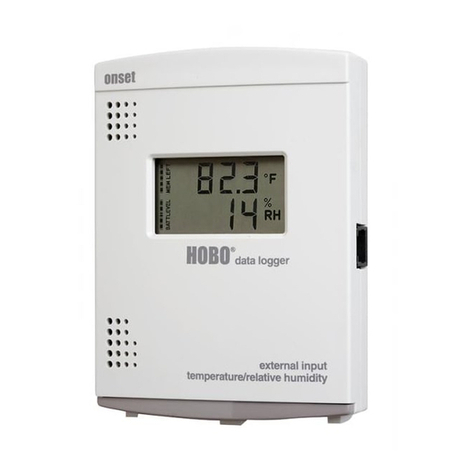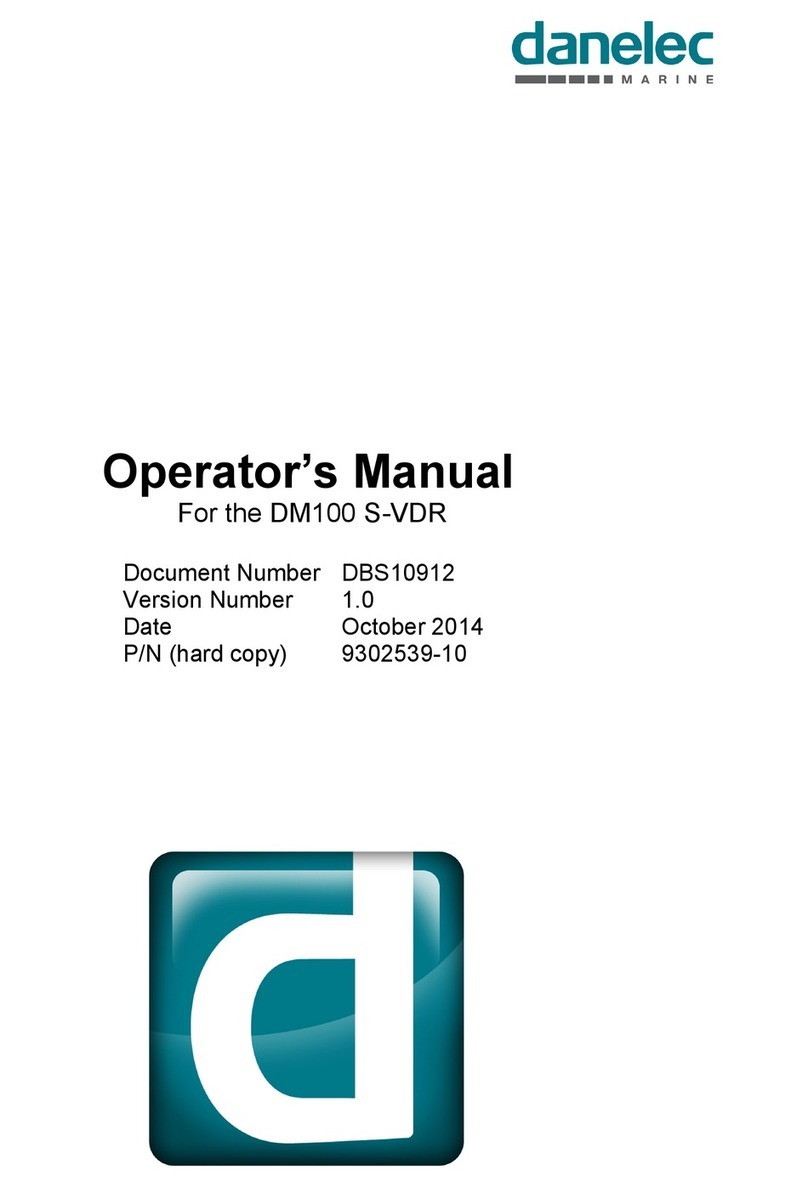Global Sat DG-100 User manual

DG-100 Data Logger
User Manual
Version 1.0

DG-100 page 2
Table of Content
1 Introduction and Features................................................3
Introduction ...................................................................3
Features.........................................................................4
2 Specifications...................................................................5
System specification ........................................................5
GPS specification.............................................................6
3 Hardware overview ..........................................................7
Hardware introduction......................................................7
Detailed Hardware Functions.............................................8
Package contents ............................................................9
4 Software Utility ..............................................................10
Software Utility features.................................................10
Install the software Utility...............................................11
DG-100 Setup...............................................................12
5 Getting Started............................................................... 15
DG-100 Usage ..............................................................16
Transfer data to your PC.................................................16
Save data.....................................................................17
Displaying the data on map ............................................18
Export data ..................................................................21
Speed filter...................................................................22
Delete the data from memory .........................................22
Metric system or imperial system.....................................22
Using the G-mouse function............................................23
6 Troubleshooting .............................................................24
►Change the battery....................................................24

DG-100 page 3
1Introduction and Features
Introduction
GlobalSat DG-100 is a GPS data logger that records track data from the received GPS
signal. With a GPS logger and antenna built in a miniature construction, DG-100
features an all-in-one, cost-effective GPS logger solution. The DG-100 records time,
date, speed, altitude and GPS location at preset intervals. Based on the SiRF star III
chipset, DG-100 offers accurate position tracking capabilities.
All recorded GPS information can be downloaded to the computer. It is a convenient,
economical way for later review of your recorded histories. Simply connect the
DG-100 to your PC or Notebook, and then download the track-log to your PC for use
with Windows based software utility. User can easily export the recorded points to
Google Earth and Google Maps.
It is ideal application in fleet management, marine navigational aids, traveling and
consumer personal use. You also can use the DG-100 as an USB GPS mouse. It is
another good feature for DG-100.

DG-100 page 4
Features
The main features of DG-100 GPS data logger
1. SiRF StarIII chipset 20 channels.
2. Allowing user to store up to 60000 points.
3. Two NiMh batteries for more than 20 hours continuous operation.
4. USB interface.
5. Power On/Off button for easy use.
6. Three preset saving intervals (Time/Distance) can be selected by slide switch.
7. Three LEDs to show the status of GPS, battery and memory.
8. MMCX port for external GPS antenna.
9. USB G-mouse function.
10. Configuration Wizard helps you to quickly make the configuration.
11. User friendly Windows based software utility. User may use the software utility to
do the following functions:
Upload recorded data
Change Recording Interval
Configuration setting
Delete recorded data
Exporting and mapping your recorded data:
(1) Exploring to KML (Interface with Google Earth)
(2) Show recorded data on Google Maps
(3) Text format
(4) Excel file format
(5) NMEA183

DG-100 page 5
2Specifications
System specification
Electrical Characteristics
GPS standard
SiRF StarⅢ
GPS Antenna
Built-in patch antenna
Operation time
Up to 24 hrs
Charge time
7 hrs
Battery Charging
USB connector @ 350mah
POWER BUTTON
Power On/Off
Press and hold for 3 second to On/Off the device.
Instant Save
Press button once to save a waypoint manually when
device is active.
STATUS LED’S
GPS status
Flashing Green – GPS position is fixed.
Steady Green – GPS position is not fixed.
Power status
Solid Red – Device is power on.
Flashing Red – Device is in low battery power.
Solid Amber – Battery is being charged.
Memory status
Flashing Blue – Memory is 2/3 full.
Solid Blue – Memory is full.
TEMPERATURE
Operating
-20°C ~ 50°C (-4°F ~ 122°F)
Storage
-20°C ~ 35°C (-4°F ~ 95°F)
Humidity
Operational up to 95% non-condensing
SLIDE SWITCH
One Slide Switch
There are three customized setting of intervals.
A (interval 1 Time or Distance selectable)
B (interval 2 Time or Distance selectable)
C (interval 3 Time or Distance selectable)
BATTERY
Battery Type
Two NiMh Rechargeable Battery
MECHANICAL
Dimension
3.15”X 2.75’’X 0.7’’

DG-100 page 6
GPS specification
Electrical Characteristics
GPS Chipset
SiRF Star III
Frequency
L1, 1575.42 MHz
C/A Code
1.023 MHz chip rate
Channels
20 channel all-in-view tracking
ACCURACY
Position Horizontal
10 meters, 2D RMS
1-5 meters 2D RMS, WAAS corrected
Velocity
0.1m/sec
Time
1 micro-second synchronized to GPS time
DATUM Datum
Default: WGS-84
ACQUISITION RATE
Hot start
1 sec., average
Warm start
38 sec., average
Cold start
42 sec., average
Reacquisition
0.1 sec. average
PROTOCOL
GPS Protocol
Default: NMEA 0183 (Secondary: SiRF binary)
GPS Output
format
GGA(1sec), GSA(1sec), GSV(5sec), RMC(1sec), GLL,
VTG is optional
DYNAMIC CONDITION
Acceleration Limit
Less than 4g
Altitude Limit
18,000 meters (60,000 feet) max.
Velocity Limit
515 meters/sec. (1,000 knots) max.
Jerk Limit
20 m/sec**3

DG-100 page 7
3Hardware overview
Hardware introduction
Power button
GPS status LED
Memor
y
status LDE
Batter
y
status LDE
Batter
y
cove
r
USB connecto
r
External
antenna
p
ort
Mode switch

DG-100 page 8
Detailed Hardware Functions
Power button Press and hold the power button for 3 seconds to turn
on/off the device.
Press power button once to save a waypoint manually
when device is active.
Mode Switch You can set up to 3 different interval modes for your
requirement by the software utility.
GPS status LED Flashing Green – GPS position is fixed.
Steady Green – GPS position is not fixed.
Memory status LED Flashing Blue – Memory is 2/3 full.
Solid Blue – Memory is full.
Battery status LED Solid Red – Device is power on.
Flashing Red – Device is in low battery power.
Solid Amber – Battery is being charged.
External antenna Port For you to connect an external antenna.
USB connector Connect with the USB cable for data transfer or battery
charging purpose.
Belt clip You can use the belt clip to clip DG-100 on your belt or
backpack.
DC charger (optional) For you to charge the DG-100 in car or use it in car.

DG-100 page 9
Package contents
Check the contents of your DG-100 package. If you find any accessories are missing or
appear damaged, please contact your dealer immediately.
DG-100
Two rechargeable NiMh batteries
Belt clip
CD (user manual, software utility)
DC charger (optional)

DG-100 page 10
4Software Utility
Software Utility features
Upload recorded data: User can upload recorded data and save it to PC.
Information Stored: 1. Only Position
2. Position, Time, Date, Speed.
3. Position, Time, Date, Speed, Altitude.
User programmable via software utility.
Speed Filter:
Speed Filter Threshold:
Disables data save if speed falls below a threshold
value.
Distance Filter Disable data save if data logger hasn’t moved
greater than the selected radius.
Saving intervals: Saving interval (Time or Distance) can be selectable.
User programmable via utility.
Mode Switch to select saving interval.
Converting Output
format (1) Exploring to KML ( Interface with Google Earth)
(2) Show recorded data on Google Maps
(3) Text format
(4) Excel file format
(5) NMEA183 file format
Configuration Wizard Using Configuration Wizard to help you quick adjust
the settings, including Mode A, B, C.

DG-100 page 11
Install the software Utility
1. Insert the software utility CD into your CD-ROM drive, the installation program
will start automatically.
2. Click on “Install USB Driver” button to install the USB driver which is needed
when you connect DG-100 to your PC.
3. Click on “DG-100 PC Software” button and follow the instruction to install the
DG-100 software utility.
4. You can click “User Manual” button to open the user manual folder. The user
manual is in PDF format. You have to install the Acrobat PDF Reader to view the
PDF file.

DG-100 page 12
DG-100 Setup
1. Turn on the power of DG-100, and
then connect it to the USB port on
PC.
2. Check the COM port of DG-100 first.
Click [Start] > [Control Panel] >
[Performance and Maintenance]
> [System], you will see the
System Properties dialog box; click
on [Hardware] tab and then the
[Device Manager] button. Expand
the [Ports (COM & LPT)] item, and
the “Prolific USB-to-Serial Comm
Port” is the COM port of you DG-100.
3. Click from [Start] > [All
Programs]> [GlobalSat Data
Logger] > [DG-100 Utility] to
start the GlobalSat DG-100 utility.
The Configuration Wizard appears when the first
time you start the program. It helps you to quickly
setup the configuration with easy step by step.
yStep 1: Select Device Type. Please select
“Data Logger”.
yStep 2: Select COM port.
yStep 3: Select the Mode switch.
There are 3 predefined modes,
including “Hiker/Backpacker”,
“Bicyclist”, and “Motorcyclist”.

DG-100 page 13
yStep 4: Select the Metric or Imperial unit.
yStep 5:
Select the
directory for
exporting
files.
yWhen you finished the setup, a
successful message appears and
all settings are saved in system.
4. The DG-100 utility will import the
setting you just made from
Configuration Wizard.
If you did not use Configuration
Wizard to do the settings, please
manually select the correct COM
port and set the Baud Rate to
“115200”.
If later on you want to enable
Configuration Wizard again, please
click from menu bar, [File] >
[Quick Configuration].

DG-100 page 14
5. From menu bar, click on [Settings] > [Configuration] to open the Device
Configuration dialog box.
fData logging format:
There are three options for you to choose those data items to be recorded.
fDisable data logging if speed falls below a threshold:
If your speed is below this specified value, DG-100 will not save the data of current
position.
fDisable data logging if distance is less than the selected radius:
If the distance between your last point and current point is less than this specified
value, DG-100 will not save the data of current position.
fData logging interval Mode A, B, C
Setup the Mode Switch for the interval (time or distance) for recording the data.
fSystem information
It shows the current memory usage status.
6. When you have done the configuration setup, press OK button to save the settings
to DG-100.
7. These setting will take effect when next time you restart the device.

DG-100 page 15
5 Getting Started
1 Open a training file. 8 The Configuration for GPS
device.
2 Save training information to
a file. 9 Metric system.
3 Preference 10
Delete records.
4 Select all files. 11
Load Track Points.
5 Export training information
to the KML format. 12
Export to Google Earth.
6 Export to CSV file. 13
Display program information,
version number and copyright.
7 Export to the text file.
Tool Bar
GPS information
Status Bar
Configuration
Tree Bar

DG-100 page 16
DG-100 Usage
1. When you press the power button to turn on the DG-100, it starts to search the
GPS signal. After the GPS position is fixed, it will begin to record and save the
position data.
2. You can select the Mode Switch for the different recording interval as you need.
3. If you want to stop recording, just press the power button to turn it off.
4. When the battery power is exhausted, it will shut down automatically.
Note: When you connect DG-100 to your PC, DG-100 will enter the “data transfer
mode”, it can not record the data in this mode. After you disconnect it from
PC, please remember to power off and restart DG-100 to make it return to
Data Logger mode.
Transfer data to your PC
1. Turn on the power of
DG-100, and then connect it
to the USB port on PC. Start
the software utility. Select
the correct COM port and set
the Baud Rate to “115200”.
From menu bar, click on
[TrackRecord] > [Load
Track Points]. Select the
data item which you want to
load and click on “Load”
button.
2. The data is loaded in the Tree Bar area, and the entire track points will be sorted
by time order displaying on the right bottom window.

DG-100 page 17
3. Select the data you want from Tree Bar area. From menu bar click [Map] >
[View Points]; the data you select will be combined and displayed in details in
a new window or the right side.
(You can click on [File] >[Select All Files] to automatically select all data
record in Tree Bar, or click on [File] > [Select All Files] again to deselect all.)
Save data
From menu bar click on [File] > [Save] to save the data to a DataLogger (*.gsd)
format. This will save all data items in Tree Bar no matter they are selected or not. You
can open the saved gsd file by [File] > [Open].

DG-100 page 18
Displaying the data on map
1. Display the track points on Google Earth:
You can display all the data from “active window” on Google Earth. Just click [Map]
> [Google Earth] from the menu bar.
1.1 By default, it only shows the track points on the map.
1.2 You can select from [File] > [Preference],
and check the “Show Speed/Time in Google
Earth” to have the Speed and Time info of the
points shown on the map.
1.3 To display the route on Google Earth, you must install Google Earth and the
internet connection is also needed. For more information, please visit
http://earth.google.com/.
Check “TrackPoints” to
display the route by red line.
Check the root record to
display all information.
Check any point which you want to display
its position and information in map.

DG-100 page 19
2. Display the track points on Google Maps:
You can display all the data from “active window” on Google Maps. Just click [Map]
> [Show Track Points in Google Maps] from the menu bar. To display the
track points on Google Maps, your PC must have the internet connection enabled.

DG-100 page 20
3. Display one track point on Google Maps:
You can double click on any track point to display its position on Google Maps.
Double click on any track
point to display its position
on Google Maps window.
Table of contents
Other Global Sat Data Logger manuals

